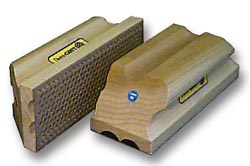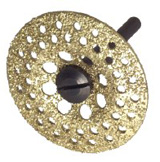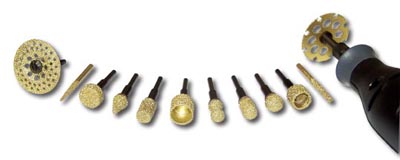
It all started with a sanding block upgraded with brazed carbide. “In 1993,” Roger Mason, the co-founder of Dura-GRIT, told me, “Brian Parrott and I started making hand tools using brazed carbide technology. That was already a common means of making tools, but not woodworking or rotary tools. We were making hand sanding blocks with a sheet of steel embedded with carbide on the bottom. Eventually we made the block more ergonomic and created a 90 degree edge so that it could work like a plane on a shooting board to sand an edge square.
“At first, we made them only for our own use, but they worked so well that soon word got out. Before long, we found ourselves at trade shows selling the tools we had made the night before. I recall one day going back into a show on the second day with a newly made rack of tools, and selling them all to other vendors before the show even opened. We decided we had a winner, and christened it the TruSander.
“Every toolbox should have a TruSander in it. This comfortable sanding block will work indefinitely, stay consistent, and replace all your coarse sanding blocks. They are available in 60- and 120-grit presently, but have in the past gone up to 220. If the market demands it, we can, of course, offer other grits again.
“Normally, when you start sanding with a sheet of 60-grit paper, the grain starts to wear, essentially changing the grit. Meanwhile, some grits tear loose and become rogue grits that cause gouging and swirls. Soon the paper wears out entirely. With our carbide surface, you keep the same grit vastly longer with no deterioration of the grit size. If you are accustomed to grit wearing down, this will take a bit of adjustment.
“The next set of tools came because we were Dremel fans and used them a lot in our hobbies and work, but were always disappointed in the quality and longevity of the accessories available. As a result, we decided to manufacture products of our own that would make the Dremel a more useful tool. I always said that if you got a Dremel as a gift you would be very excited. After all, the tool often came with many accessories, but once you wore them out, you’d have to go back to buy more accessories, grinders and sanding bands. That that took the edge off the joy of owning such a nice tool.
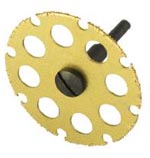
“Our mandate was to design some accessories that would work harder, do more things, and last longer. We chose carbide grit as the medium, and designed a wide range of cutting, grinding and sanding wheels and burrs that lasted vastly longer. They are not made for metal, but they will work on wood, laminates, fiberglass and plastics, provided you don’t run the tools too fast to melt the plastic onto the surface.
“The only problem you might run into is the possibility of the grit clogging, and that’s easily fixed. You can clean our tools with a wire brush without damaging the sanding surface. To remove wood resin, soak the wheel in acetone. To remove carbon clogs from having burned wood with the tool, use oven cleaner. None of these will hurt the tool, and with minimal cleaning, our cutting surfaces can last for years.
“If you are a Dremel or Foredom fan, we offer a huge range of grinding and sanding burrs, cutting wheels, and even sanding drum sleeves. Some of our small rotary tools are coated on both sides and the edge with grit. That means you can sink the wheel up to its axle into wood, rotate it, and it will cut away all the wood without shattering. Think about it: you can cut a recess for a door strike with one tool, and quickly at that, and you can use it to bevel an edge as well.
“We also offer carbide sanding files which, unlike normal metal files, cut in both directions. The same is true of our Flat Sanders, which are flat metal plates with grit on one side. These are much thinner than a file, only about a sixteenth of an inch thick, so they will make it into very tight spaces, and they will flex a bit as well. Unlike wood rasps and files, you can even use them on other materials, such as ceramic wall tile. We offer them in 60- and 120-grit, and one in a combination form with 60-grit on one end and 120 on the other.
“More recently, we introduced Ultra-FLEX, a very flexible steel sheet abrasive that is only about five-thousandths of an inch thick. Thus you can cut it with scissors to any size or shape. It might dull the scissors, but you can then use the Ultra-FLEX to sharpen the scissors. You can bend it around a dowel to create any curve, or create a diamond shape, or form it to any molding shape. You can also mount it on any quarter sheet sander. Like our other products, you can clean it with a wire brush if it gets clogged, and it will last indefinitely.
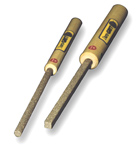
“We even offer a unique carbide scrollsaw sander. It’s three-eighths of an inch wide, about a thirty-second of an inch thick and is coated with 80-grit on one side and 150 on the other. Because there’s grit on the edge, you can even use it as a saw, and use the face as a grinder or sander. For your random orbit sander, we sell five-inch discs with perforations for both five- and eight-hole sanders.
“We still design and develop new products locally up here in Canada, but our products are all manufactured in the U.S. For the nonce, you’ll find us at companies that specialize in carving tools, or you can buy direct from our website.”
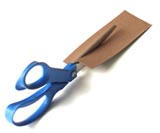
Just how long do they last? “Recently,” Mason told me, “a workman showed up at my house to build a solarium, and pulled a well-worn TruSander block out of his tool box. He told me he loved it and had been using it since 1998 and it still worked great. I gave him a new one anyway.
“About six years ago, a guy came up to us at a show and said he had built an extension onto his house and needed to clean a brick wall by sanding it. The belts and discs on his sanders shredded immediately after only half a dozen bricks. He bought two of our five-inch carbide disks to try. Apparently, he was able to do the entire wall with only one disk, and it still had not worn out. He came back to us a year later at another show and tried to return the second, unused disk.
“That’s why we say that every toolbox should have them.”
